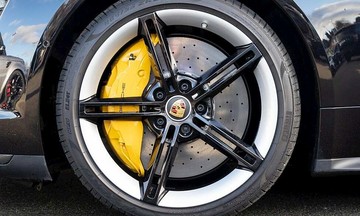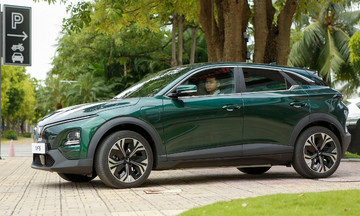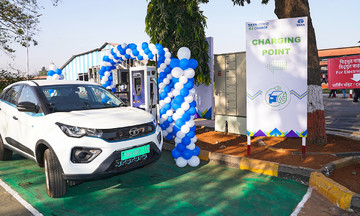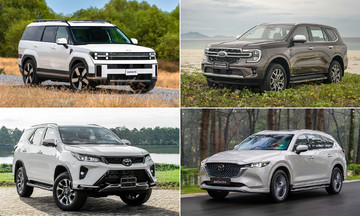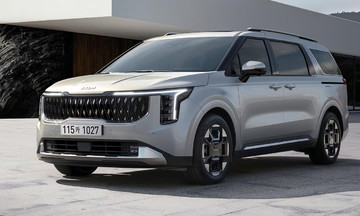Despite predictions of declining electric vehicle sales this year due to the Donald Trump administration's policies reducing EV support programs, the nation's charging network continues to grow. Charging stations are expanding in scale, offering more power and a better experience for EV drivers.
The likelihood of encountering broken, crowded, or slow chargers is diminishing. Meanwhile, the chance of finding a reliable, high-powered charging station—complete with WiFi, restrooms, and even quality coffee and a variety of snacks—is increasing.
According to charging data firm Paren, the deployment of new fast charging ports and stations is occurring at a record pace in 2025.
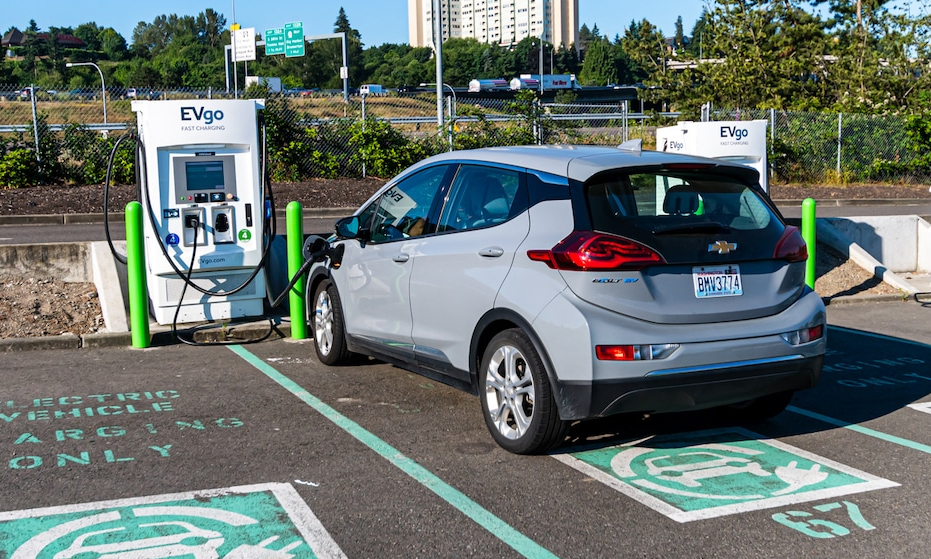 |
A Chevrolet Bolt at an EVgo charging station in Tacoma, Washington. Photo: Joe A. Kunzler |
A Chevrolet Bolt at an EVgo charging station in Tacoma, Washington. Photo: Joe A. Kunzler
The US is expected to add 16,700 public fast charging ports by the end of this year, about 2.4 times the number added in 2022. If this trend continues, the US will have 100,000 public fast charging ports by 2027.
"Despite disruptions from federal funding and other factors, 2025 will be a record year for fast charger deployment—with estimated growth of nearly 20% annually in the number of new ports," Dr. Loren McDonald, head of research at Paren, said on 28/7.
Contributing to this trend are companies that Paren calls "Charging 2.0." This refers to new companies like Ionna, Mercedes-Benz High Power Charging, BP Pulse, and Walmart, signaling the next phase of charging in the US.
In this phase, new EV charging stations are becoming more standardized, with a minimum of 10 chargers offering 350-400 kW of maximum power. This means more plugs for EV drivers, reduced congestion, and faster charging times. In fact, 63% of chargers deployed in Quarter II are capable of delivering 250 kW or more, up from 47% in Quarter I.
The US currently has 11,687 public fast charging stations with nearly 60,000 ports. Approximately 4,242 of these ports were added at 784 stations in Quarter II of this year, a 23.3% increase over the previous quarter. Tesla, ChargePoint, and EVgo are leading the pace of quarterly deployments.
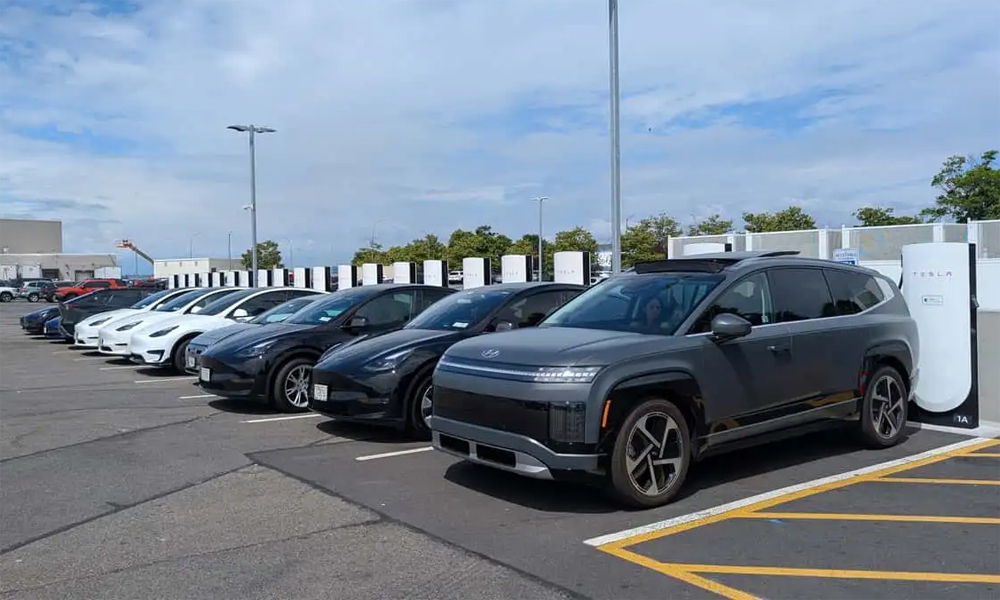 |
A Hyundai Ioniq 9 (far right) alongside Tesla models at a Tesla charging station. Photo: Suvrat Kothari |
A Hyundai Ioniq 9 (far right) alongside Tesla models at a Tesla charging station. Photo: Suvrat Kothari
Tesla still accounts for 40.2% of new fast charging ports opened between April and June. Tesla's market share reached a stable 54.3%. In terms of overall DC fast charging port market share, Electrify America ranks second (7.9%), followed by ChargePoint (6.9%).
The size of stations is also growing. In Quarter II 2024, non-Tesla public fast charging stations averaged three ports per station, while Tesla averaged 12.4. But this number is rising rapidly, as non-Tesla stations now average 3.8 ports per station, while Tesla Supercharger stations now average 15.1 ports per location.
However, according to InsideEVs, the overall picture isn't entirely rosy.
The average utilization rate of fast chargers in the US decreased from 16.6% in Quarter I to 16.1% in Quarter II. In fact, utilization rates declined in 70% of states, although many in rural America experience higher utilization rates with fewer chargers in their areas.
Paren attributes this partly to seasonal changes—EV batteries charge faster in the summer than in the winter, when battery cells can take time to reach optimal temperatures.
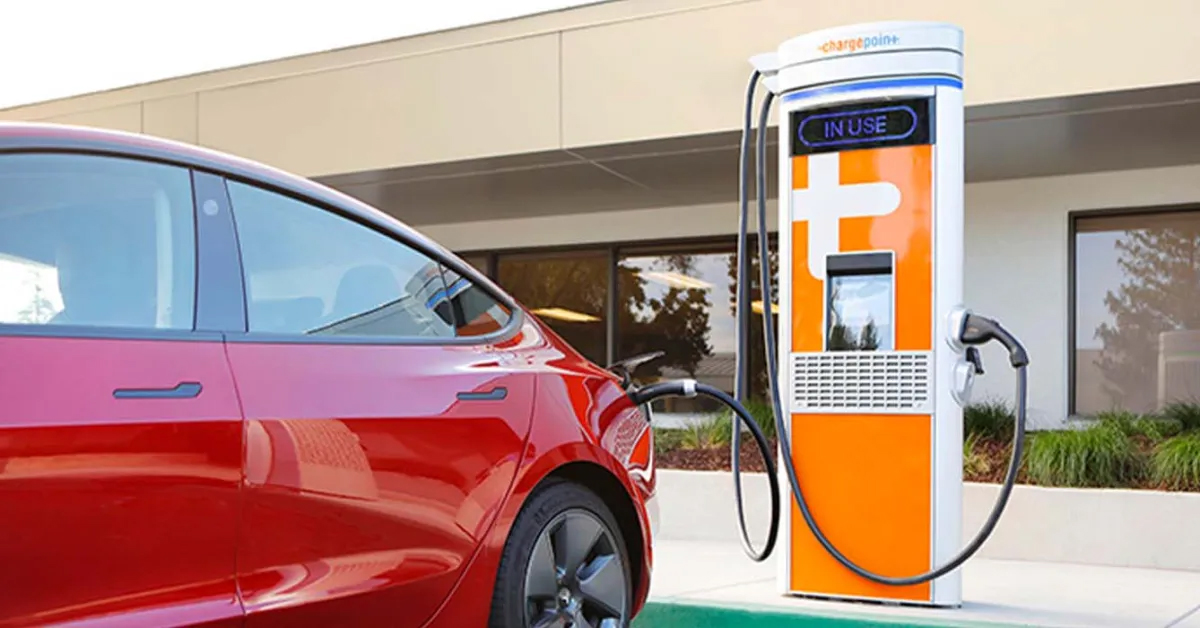 |
A ChargePoint charging station in the US. Photo: ChargePoint |
A ChargePoint charging station in the US. Photo: ChargePoint
However, the average utilization rate is also decreasing due to the installation of new chargers in areas with lower adoption rates. This is because these newer "Charging 2.0" companies are "preparing for the future" and "building ahead of demand."
Now, Italian electric vehicle supply equipment (EVSE) manufacturer Alpitronic is helping raise the bar.
Alpitronic manufactures its own chargers, supplying them to large networks like Electrify America, which then operates and maintains the charging stations. Some companies, such as Tesla and ChargePoint, take a vertical approach by building and operating their own equipment.
Alpitronic focuses on its strength: building charging stations. The company is now the backbone of the charging ecosystem in Europe, powering some of the continent's largest charging networks, including Ionity and Fastned.
Now, Alpitronic has quietly become the second-largest charging hardware provider in the US, behind only Tesla, according to data from charging analytics firm Paren provided to Inside EVs.
Alpitronic chargers are projected to account for 12% of all public fast charging stations deployed in the US in 2025. This figure is for hardware providers only, not larger networks. In 2024, Alpitronic's market share was 0%.
Over the past 12 months, Alpitronic has signed contracts with a growing list of US partners, including: Ionna, Walmart, Mercedes-Benz High Power Charging, Electrify America, BP Pulse, and Greenlane. It is also developing charging networks for commercial truck fleets.
My Anh






